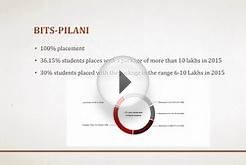As the United States works towards tackling the nation’s ever-growing student loan debt, let’s take a look at how countries around the world finance their higher education. Do they do it better?
Average cost of tuition/year in the United States
Public Schools: $8, 240
Private Schools: $28, 500
1. Australia
Average cost of tuition/year: $7, 700
For a brief period from 1973-1988, Australia provided higher education completely free of cost. Now, however, students down under are not so lucky–but it’s for a good reason! Tuition fees for higher education were re-introduced because of increasing participation and enrollment in institutions of higher education, and even then, Australian students still pay far less than the average student in the United States. Their loan repayment process is a little more generous as well: students can receive monetary aid via the HECS-HELP scheme, a system where students can borrow up to their entire cost of attendance, and can begin paying it back with automatic 4-8% paycheck deductions after their professional income exceeds a certain threshold, with discounts given for early repayment. Australia also provides additional special assistance to its indigenous population.
2. Canada
Average cost of tuition/year: $5, 900
For the most part, our neighbors to the north have a loan system similar to ours. Students completing undergraduate studies can take out private, provincial or federal loans via the Canada Student Loan Program (CLSP). With the exception of Newfoundland, the only province which does not charge interest, students have the option of choosing between a fixed or floating interest rate. Canada offers a range of programs to assist those who have trouble repaying their loans, including an Interest Relief system and a program for those with permanent disabilities. Canadians on average paid $5, 900 in tuition fees during the past year, far lower than both public and private school averages in the United States. That’s not to say that students are happy, though. If the stories of Canadian student protests during the past few months sounded familiar, it’s no coincidence–students in the province of Quebec have been taking to the streets in the thousands, and what began as a protest of rising tuition prices in the province has quickly escalated into something resembling the Occupy Wall Street clashes of the past fall. However, the amount of money being disputed may come as a surprise. The province of Quebec has the lowest tuition prices in the nation, and is looking at an increase of $2, 168 to $3, 793 over the next five years, with students paying approximately $325 more per year. While this may sound small, the 75% increase in tuition is certainly something these students have deemed worth fighting against.
3. China
Average cost of tuition/year: $2, 200
When it comes to a college education, the United States and China could not be more different. While students in the United States can take comfort in the fact that standardized tests like the SAT and ACT are beginning to factor less prominently in colleges’ acceptance decisions, higher education institutes in China accept their students based on one all-or-nothing entrance exam, commonly known as the gaokao. And while many students in the United States opt for private colleges, which often come with higher prestige and higher sticker prices, Chinese government-funded public institutions are not only pricier, but are considered far more prestigious than their private counterparts. Furthermore, the relatively low cost of higher education means that student loans are relatively unheard of in China—most families are able to pay for college without government assistance.
4. United Kingdom
Average cost of tuition/year: $13, 500
Tuition fees for universities in the United Kingdom were introduced relatively recently, when then-prime minister Tony Blair passed the Teaching and Higher Education Act of 1998, which stipulated that students should expect to contribute at least £1, 000 towards their higher education. Since then, the United Kingdom has continued to raise the price of tuition at an alarming rate. While the United Kingdom places a cap on the maximum amount that universities are allowed to charge for tuition, the cap has risen steadily over the past decade. In 2012, the cap was raised to £9, 000 (about $14, 000 USD), a huge leap from the previous cap of £3, 290 ($5, 160 USD). Since the announcement of the cap increase, over 60 universities have announced plans to charge the full £9, 000, significantly increasing the average cost of tuition, and sparking student protests across the United Kingdom–are we sensing a trend here? As for student loans, which are given primarily by the government-funded Student Loans Company (SLC), the government mandates that eligible students pursuing an undergraduate degree may receive both a tuition fee loan as well as a maintenance loan, which covers living expenses. While these loans are set at a fixed amount, low-income students may reapply to receive a larger loan or a maintenance grant, which does not have to be repaid.
5. India
Average cost of tuition/year: $1, 500 (IIT system only)
While the average cost of tuition for India’s highly prestigious Indian Institute of Technology school system is quite low, the cost of higher education in India varies widely by region and institute, making it difficult to find a representative average. India’s top three institutes of higher education are the Indian Institutes of Technology, Indian Institutes of Management and the National Institute of Technology. Admission into these institutes is highly selective and dependent upon a competitive entrance exam. While India does not have a federal loan system, most public and private sector banks offer student loans, an option growing in popularity as higher education costs rise. The amount granted is dependent on the student’s course of study, university, and the repayment capacity of the student and his/her family. Certain banks offer fixed interest rates of 10-15%, while others offer both fixed and floating rates. Repayment begins after a grace period of 6-12 months after the student’s college courses end.
6. Sweden and Germany
Average cost of tuition/year: $0
Yes, you read that right—in Sweden and Germany, tuition is completely free! Both countries have striven to make higher education as accessible as possible, regardless of income or socioeconomic status, hoping to increase the number of students who pursue a higher education as well as improve their countries’ global education standing. While you might think that free tuition may make student loans all but obsolete in these countries, students can take out loans that cover living expenses, study materials and anything else the student may need to successfully complete his or her higher education. These loans must be repaid on a monthly basis before the individual turns 60. And before you think about hopping on a plane to pursue a free education, be warned–this deal only applies to citizens. International students and non-citizens pay about as much as a private university in the United States.









